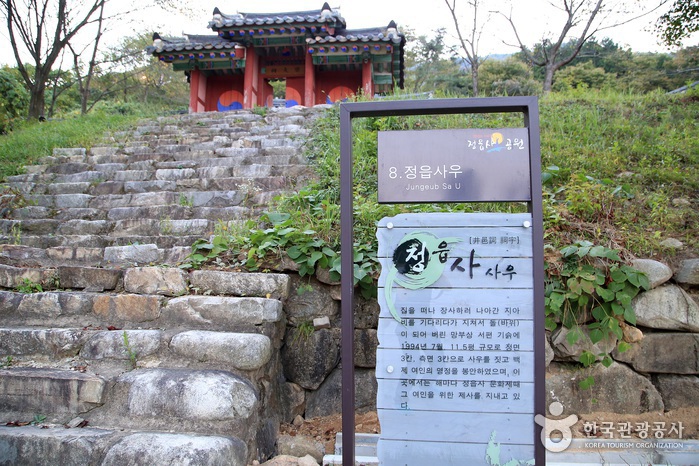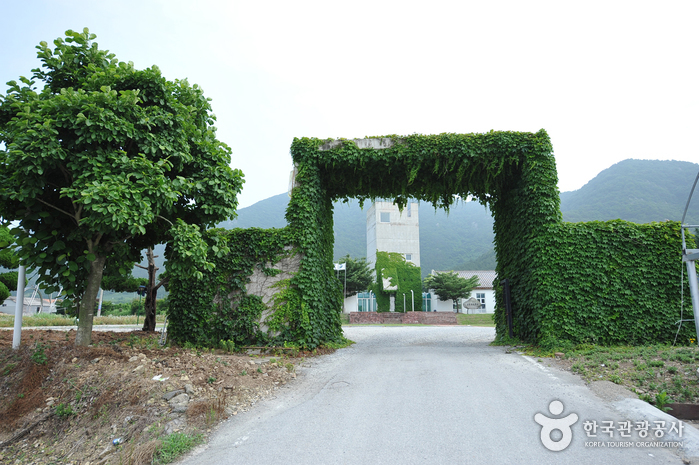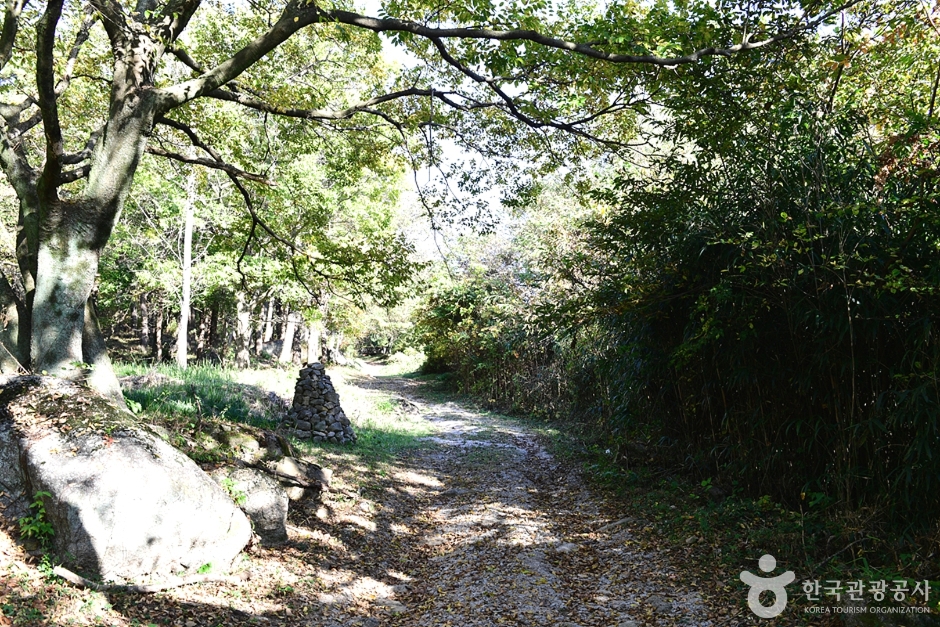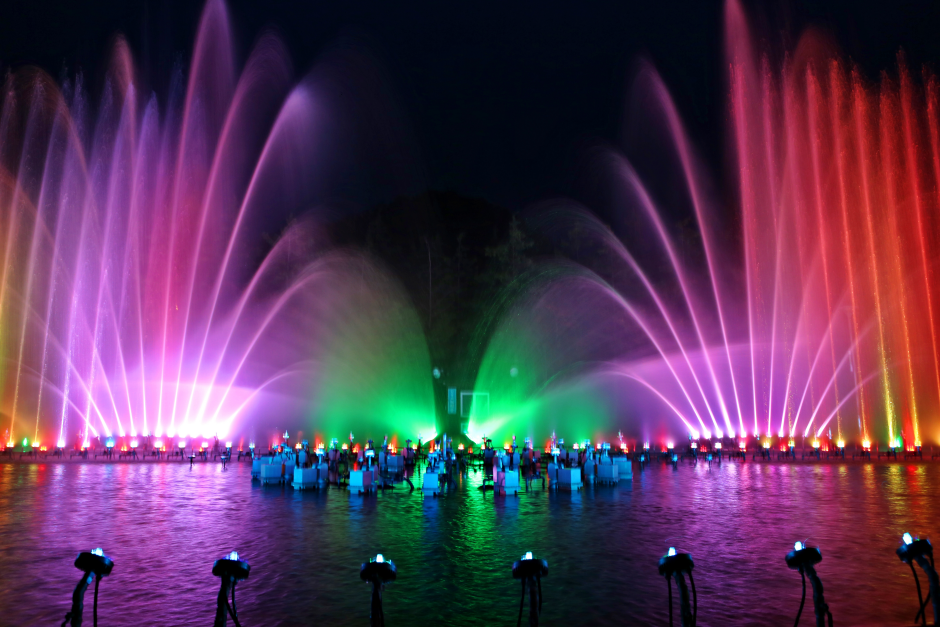Jeongeupsa Culture Park (정읍사문화공원)
15.6Km 2024-04-07
Sigi-dong, Jeongeup-si, Jeonbuk-do
+82-63-539-6776
Jeongeupsa Culture Park (located in Sigi 3-dong in downtown Jeongeup-si) was built in honor of ‘Jeongeupsa’ a famous Baekje Gayo (a type of poem from the Baekje dynasty). Jeongeupsa is the only poem of the five Baekje Gayos (Jeongeupsa, Mudeungsangok, Bangdeungsangok, Seonunsangok, and Jirisangok) recorded in Hangeul that remains in existence today.
The park, built on the location where the epic poem took place, boasts a 2.5-meter high granite statue of the heroine of Jeongeupsa. Nearby the statue are a shrine and a 2-meter wide monument commemorating the poem. Located in the vicinity are the Jeongeupsa Art Center, the Korean Classical Music Center, the city library, and an outdoor stage.
Gohyang Sikdang (고향식당)
15.7Km 2024-04-18
20-3 Jungchon-gil, Asan-myeon, Gochang-gun, Jeonbuk-do
Gohyang Sikdang is a highly recommended restaurant in Gochang known for its grilled eel dishes. Their signature dish is the Pungcheon jangeo yangnyeom gui (Pungcheon grilled marinated eel) seasoned with a sauce made from over 30 kinds of fruits and medicinal herbs, grilled to perfection. Pungcheon eel from Seonunsan is famous for its rich and savory flavor. They also offer other menu items such as jangeo tang (spicy eel stew) and dolsot sanchae bibimbap (hot stone pot wild vegetable bibimbap).
Midang Literary House (미당 서정주 시문학관)
15.7Km 2025-01-10
2-8, Jilmajae-ro, Gochang-gun, Jeonbuk-do
+82-63-560-2760
The Midang Literary House is a memorial center for the great poet Seo Jeong-Ju (penname ‘Midang’) built in Seonun-ri in Gochang-gun, Jeollabuk-do, where the poet was born and is buried. In the fall of 2001, a year after the poet’s death, the center opened on November 3rd on the anniversary of the Gwangju Student Movements (1929 and 1930), which took place while Midang attended Jungang High School. Located adjacent to the center are the poet’s birth house and grave.
Housed in a renovated branch of Seonun Elementary School, the Midang Literary House was structurally designed to convey the architectural concepts of 'eco-friendly' and 'learning.’
Gosan Mountain (고산)
15.8Km 2024-04-07
Sanggeum-ri, Daesan-myeon, Gochang-gun, Jeonbuk-do
Gosan Mountain is a beautiful mountain that rises sharply from the plains, offering stunning views from its summit at an elevation of 572 meters. The mountain delights hikers with lush pine forests and interesting rock formations. Gosan Mountain is also known for its numerous dolmens, dating back to prehistoric times, and the Gosansanseong Fortress, built during the Later Three Kingdoms period, providing plenty of attractions for visitors.
Naejangsan Cultural Tourism Musical Fountain (내장산 문화관광 음악분수)
15.8Km 2024-04-07
37 Naejanghoban-ro, Jeongeup-si, Jeonbuk-do
The Naejangsan Cultural Tourism Musical Fountain, set within Naejangsan Water Park, boasts an impressive array of over 110 songs, ranging from children's tunes and pop hits to movie soundtracks. Accompanied by 14 unique fountain shows featuring various types, the display is indeed a sight to behold. Spanning 56 meters in length and 21 meters in x_width, the fountain includes 463 nozzles and 276 underwater lights, all designed to captivate and amaze onlookers. The musical fountain offers three performances daily, each catering to different music tastes and themes. The 19:00 show highlights classic pop songs, the 20:00 show is perfect for young children with a repertoire of children’s music, and the 21:00 show soothes the evening with ballads and idol music. Whether one is with their significant other or enjoying family time, the musical fountain’s performances—akin to a magical dance of water and light—are sure to provide an enchanting experience.
Dosolgyegok Valley (Seonunsan Mountain) (도솔계곡 (선운산))
15.9Km 2025-03-15
250, Seonunsa-ro, Gochang-gun, Jeonbuk-do
+82-63-560-8681
Dosolgyegok Valley is located in Seonunsan Mountain in the Gochang-gun district. Seonunsan Mountain, which is also called Dosolsan Mountain, is known for its thick forests and intriguing rock formations. Along the valley, there are many interesting sites such as Jinheungdonggul Cave, Yongmundonggul Cave, Nakjodae Overlook, and Cheonma peak. Dosolgyegok Valley is also famous for being very deep, where the mountain and water fight each other and whirl around in a yin & yang shape. The green forests in summer cover the valley beautifully, and the red leaves and white snow decorate the area in fall and winter.
Gochang Seonunsa Temple (선운사 (고창))
15.9Km 2024-04-07
250, Seonunsa-ro, Gochang-gun, Jeonbuk-do
+82-63-561-1422
Seonunsa Temple is known to have been built in 577, the 24th year of King Wideok of the Baekje dynasty. It is the second head temple of Jogye Order in Jeollabuk-do. According to the temple's historical records, it was originally a very large temple with 89 hermitages and 3,000 monks. Today, only four hermitages remain: Dosoram, Chamdangam, Dongunam, and Seoksangam. In addition, the temple is home to 25 prestigious heritages, namely the Forest of Common Camellias, which is designated as ㅁ Natural Monument. A festival dedicated to this forest is held every April.
Naejangsan Maple Ecology Park (내장산 단풍생태공원)
16.0Km 2025-08-18
273-17 Naejanghoban-ro, Jeongeup-si, Jeonbuk-do
Naejangsan Maple Ecology Park is created near Jaejangho Lake in Jeongeup and has diverse kinds of trees, included 11 types of indigenous maple trees. The park comprises diverse maple-themed recreational amenities such as Maple Experience Exhibition Center, various gardens, maple tunnel trails, and more. The best time to enjoy the park is in Novemeber when the fall foliage is at its peak and the park hosts a variety of events and exhibitions.
Gochang Dosoram Hermitage (도솔암(고창))
16.6Km 2024-04-07
294, Dosol-gil, Gochang-gun, Jeonbuk-do
+82-63-564-2861
Dosoram Hermitage, along with Seonunsa Temple, is thought to have been built during the Baekje era (18 BC-AD 660). The temple is managed by Seonunsa Temple on Dosolsan Mountain in Gochang-gun, Jeollabuk-do.
Jeongeup Ssanghwacha Street (정읍 쌍화차거리)
16.8Km 2025-01-09
147 Jungang 1-gil, Jeongeup-si, Jeonbuk-do
This unique street, known for its cafés selling ssanghwacha, is located along Jungang 1-gil, which is about 200 meters from Jeonbuk Jeongeup Police Station, right in the heart of downtown Jeongeup. Ssanghwacha is a traditional Korean tea made by brewing ssanghwatang, an herbal concoction that includes ingredients like white woodland peony, Chinese foxglove, angelica root, cinnamon, and licorice. Often, to cater to personal tastes, nuts such as walnuts and pine nuts, along with egg yolk, are added to the brew. This tea is particularly favored by middle-aged Koreans and is commonly consumed for its restorative properties when one is suffering from a cold or feeling run-down. The flavor is distinctively herbal with a bitter edge and a sweet finish. At the street’s entrance, a sculpture featuring a ssanghwacha teapot offers a warm welcome to visitors. The renowned Ssanghwatang Teahouse, with a history spanning over 30 years, remains a strong presence on this street, accompanied by about ten other large and small teahouses specializing in ssanghwatang. These cafés typically serve traditional Korean desserts like garaetteok (rice cake stick) and nurungji (scorched rice), which complement the herbal tea perfectly.







 English
English
 한국어
한국어 日本語
日本語 中文(简体)
中文(简体) Deutsch
Deutsch Français
Français Español
Español Русский
Русский